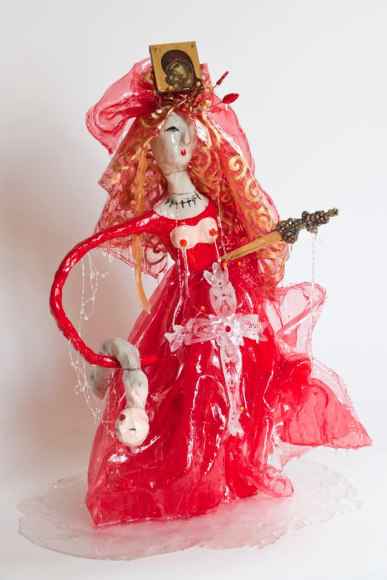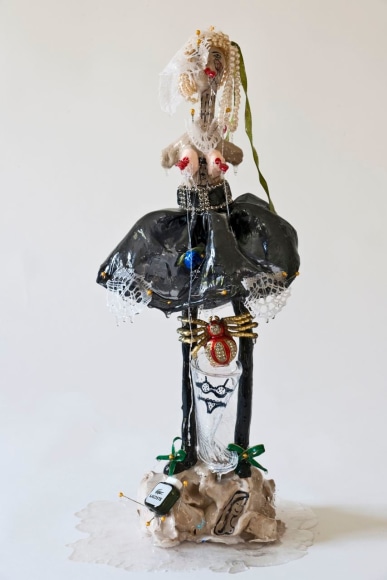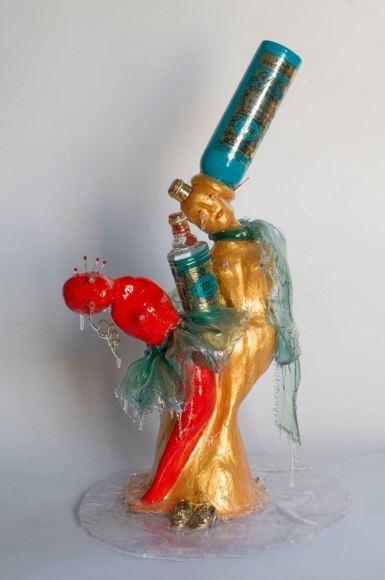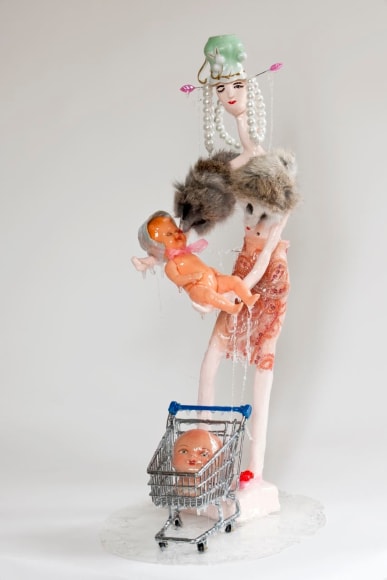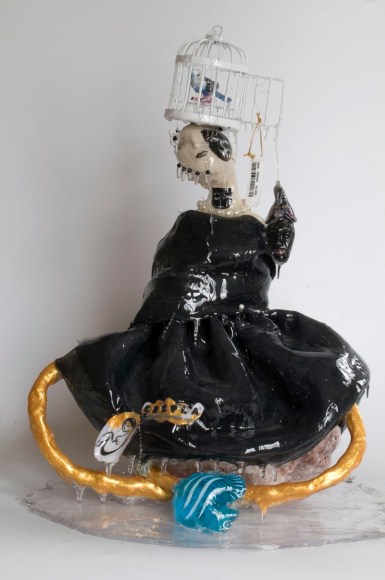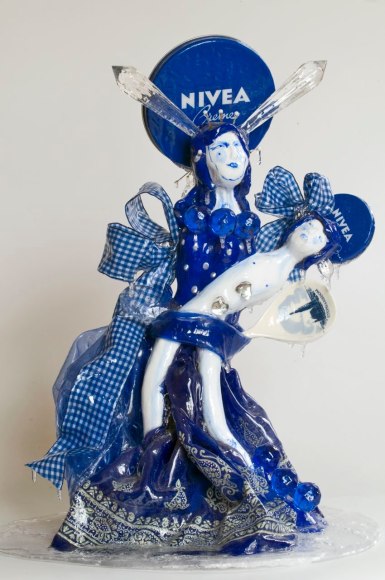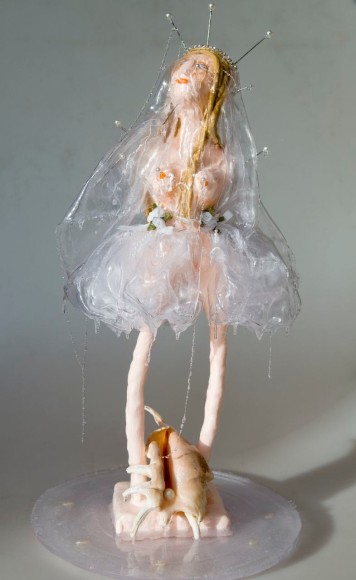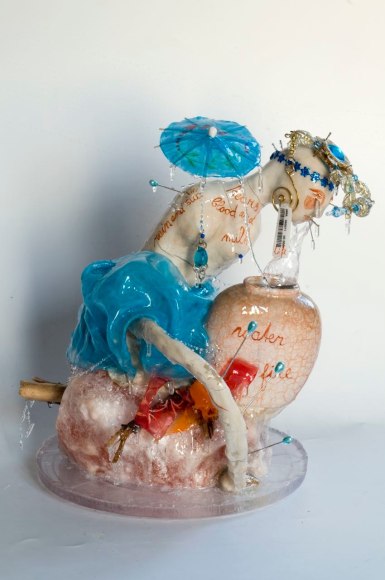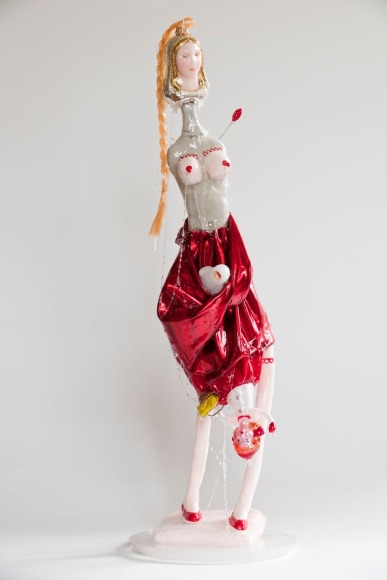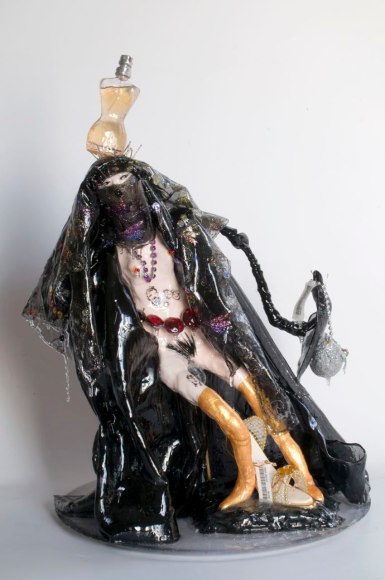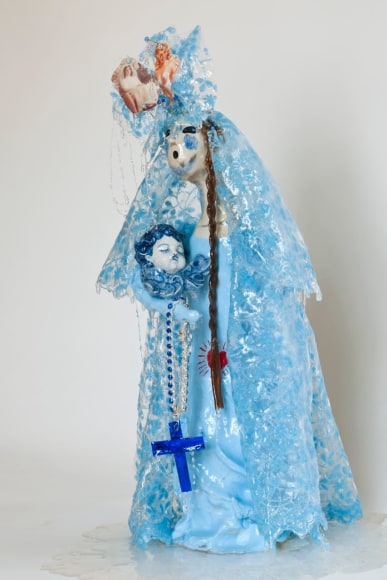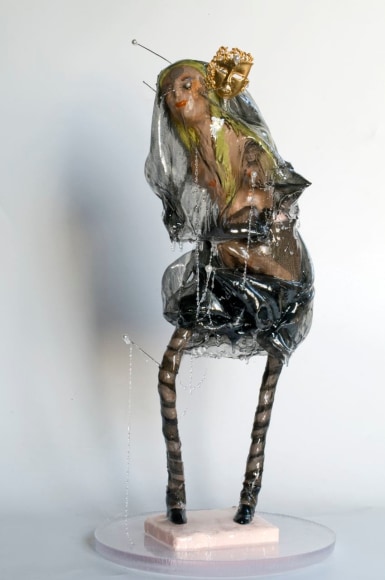STUX Gallery is delighted to present Cruel Beauty: New Sculptures, a series of new sculptures by Dutch artist Marliz Frencken. After an extensive exhibition history throughout Europe, Frencken’s first solo exhibition in the United States in many years features her quasi-surreal sculptures of female figures brimming with paradox and symbolism.
Frencken has developed a unique sculpting technique in which she dips clay sculptures adhered with a variety of found objects in clear resin to create fairy tail-like women. The vibrant colors and the layering of curious and playful items such as perfume bottles, birds and babies is counteracted by the menacing addition of swords and pins which puncture their flesh, as barcodes and logos hang from various body parts. Their distorted, elongated, strange figures recall a diverse range of female ideals, all equally engrossing yet even sometimes macabre. Coated in a clear, dripping resin and bound up in coils of clay and cloth these women appear to be trapped or frozen in time, like specimens of a larger population. Through their voodoo-like qualities they reveal secret desires and fixations of modern women that we all can identify with.
A sense of ripe feminine sexuality emanates from most of these figurines. Specific elements, such as the religious and cultural artifacts, are presented in provocatively violent and sexual ways. As Frencken places these women in the stance of the Pieta protected by halos made of Nivea containers or in Burkas open at the front revealing chests tattooed with the bearded faces of men, Marliz builds a mix of social criticism, consumerism, religion, and purity. Sometimes babies drop from between the figure’s legs or come draped over her arms and laps like furs suggesting that she is simply dripping with a fertility to which she is indifferent. The animals, babies, and obscure headdresses make her surreal, even monstrous at times. This coupling of femininity with physical and psychological deformity is one of many strange relationships and paradoxes these sculptures evoke. Frencken works in a delicate balancing act along the narrow dividing line between art and kitsch. As the great European curator, Jan Hoet the director of the Museum MARTa Herford in Germany, who discovered Marliz Frencken, once wrote:
“The sculptures appear equally attractive and repulsive, enchanting and sinister, figurative and abstract, precious and kitschy.”

